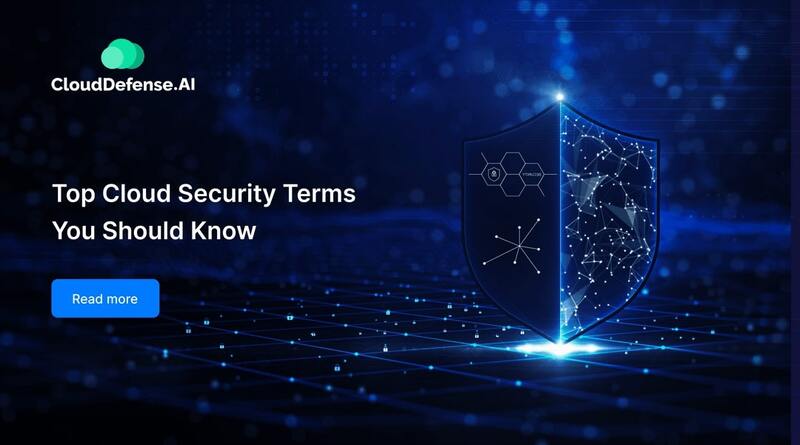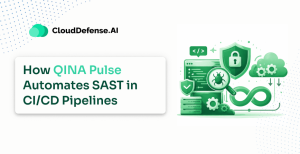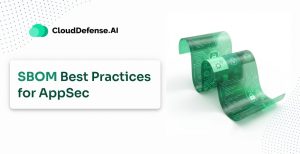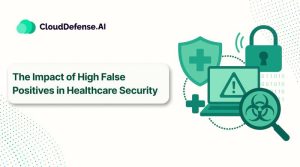50+ Top Cloud Security Terms In 2025
In modern times, as organizations are gradually shifting their workload to the cloud, the importance of having good knowledge of cloud security is also increasing. When you are utilizing cloud security as a user or an IT Professional, it is easy to get perplexed by the overwhelming number of acronyms, industry security terms, and vendor-specific terms.
To deal with modern cloud security services, it is best to have a good grasp of various cloud security terms, and it will help you to navigate through current cloud services. To help you create a good knowledge base, I now present to you a list of top cloud security you should know in modern times.
List of Top Cloud Security Terms

1. Application Program Interface (API)
An application program interface or API is basically a set of procedures and functions that helps in the development of an application and allows it to use the features or data of other applications, OS, or services.
2. Agent
The term agent is used to define special applications or software packages that are often integrated into machines and applications for implementing different security-related tasks.
3. Agent-Based Security
Agent-based security controls the agents deployed in the machine and devices, and they collect all the data on vulnerability and security flows that the agents report. This kind of security feature is suitable for infrastructure that has a poor network connection.
4. Advanced Persistent Threat (APT)
The APT or advanced persistent threat is a type of cyber attack where an attacker breaches an account or network without getting tracked. It is an initial breach technique where the attacker gets into the account and continues its attack after the breach.
5. Application Security (AppSec)
Application security, often referred to as AppSec, is the security standard that is implemented by an organization to protect the application after it is deployed. It is only about protecting the cloud application by identifying, fixing, and preventing security threats and attacks.
6. Agentless Security
Agentless security is a relatively modern term that describes the process of identifying and fixing anomalies or vulnerabilities in an application or device without requiring the installation of any software. It is an advanced security aspect where cloud security is integrated directly into the device from the server.
7. Behavioral Analysis
Considered a security measure where a file’s behavior or activity is governed and analyzed by the security team to identify any malicious background process. This term tells about confidential communication that a file is making with a third-party software or server.
8. Breach Response
A security method that fixes all the damages caused by a breach in the cloud environment. Enabling multi-factor authentication, restoration of lost documents, revoking API tokens, and documenting and classifying leaked information are some common breach responses.
9. CASB (Cloud Access Security Broker)
CASB is an acronym for cloud access security broker that acts as a security tool that enables the organization to monitor behavior, set policies, and control applications in the cloud. It is instrumental in limiting the employee’s usage of some SaaS or the activity within those SaaS. It is also useful for managing shadow IT. However, it can’t govern any third party in your cloud environment or application.
10. Cloud Control Plane
The cloud control plane is part of a network that is responsible for controlling how data moves in the network. It carries all the information that is required to establish and control the network.
11. CNAPP (Cloud-Native Application Protection Platform)
CNAPP, or cloud-native application protection platform, is a common cloud security term, and it serves as a cloud security model that encompasses CSPM, CSNS, and CWPP in a single platform. CNAPP is a cloud-native security solution that ensures complete security in the entire lifecycle of an application.
12. CSPM (Cloud Security Posture Management)
Cloud security posture management is a security solution that automatically identifies and remediates any security issue in the cloud, which might include IaaS, SaaS, and PaaS. It continuously monitors the cloud configuration for risks and misconfiguration. CSPM is widely used for incident response, risk assessment, DevOps integration, and compliance monitoring.
13. CSP (Cloud Service Provider)
A popular term is an acronym for cloud service provider, which serves as a third-party provider of cloud infrastructure, application, storage, platform, and other services. Some popular CSPs that you will come across in the market are Amazon Web Services, Azure, Google Cloud Platform, and CloudDefense.AI.
14. Container Security
Container security is another popular cloud security term, and it is a method of implementing security tools and measures to ensure robust information security to container-based workloads. It helps security to have constant monitoring of all the vulnerabilities and risks that might be associated with a container host.
15. CI/CD (Continuous Integration/Continuous Delivery)
CI/CD is the short form continuous integration and continuous delivery where CI represents the process consistent way to develop code and test applications. The term CD defines the automated process of delivering all the applications of CI to cloud infrastructure. The CI/CD pipelines allow for quick changes, and that too without creating downtime or delays.
16. DRM (Digital Rights Management)
Digital rights management is a bunch of access control technologies that enable users to limit the use of confidential information and proprietary hardware in the cloud. DRM uses key management and encryption to restrict the usage of users in the cloud infrastructure.
17. Data Classification
It is a security process where all the documents and data of an organization are thoroughly scanned and segregated according to their sensitivity. These documents are automatically encrypted for appropriate sharing permission.
18. DDoS (Distributed Denial of Service)
DDoS is the abbreviated form of Distributed Denial of Service, and it is a malicious attack where the attacker uses multiple sources to overwhelm the normal traffic of a device. Due to the disruption in the normal traffic of the targeted device, the internet locks up the system and goes into a temporarily unavailable state.
19. DevSecOps
DevSecOps stands for development, security, and operations, and it defines the collaborative working of operation and security teams. Here the security teams take part in the software development process and delivery to ensure optimum security at a granular level.
20. DLP (Data Leak Prevention)
Data leak prevention is a security process that prevents the sharing of all the vital data of an organization to others outside the organization or unauthorized users. It is highly suitable to control the sharing of sensitive data outside the organization, and it is applied through policies.
21. Entitlements
Entitlements are like permission that allows domain users to get control over basic users’ consent to gain entry into specific parts of the tool.
22. Encryption
Encryption is a popular cloud security term that you will often come across in security services. Encryption is basically a method of converting any information into a secret form so that all sensitive and confidential data can be protected. It is highly useful in improving the security of communication and preventing attackers from getting their hands on the data.
23. Firewall
A firewall is a network security device that not only monitors but filters all the incoming and outgoing network traffic in an organization. It also decides whether certain traffic should be allowed to move or blocked based on the security policies set by the organization. It also serves as the first line of defense in network security, and it primarily stops most of the unauthorized traffic.
24. GCP (Google Cloud Platform)
GCP, or Google Cloud Platform, is a suite of cloud computing services that many organizations use to manage their cloud workloads and applications. It is a web-based infrastructure that is also used by Google itself to run its end-user products Gmail, Search, YouTube, and many more. Using this infrastructure, you can develop, deploy and run your cloud application on various servers.
25. Governance
Governance defines the suite of rules and protocols that is implemented by an organization operating in a cloud environment to ensure optimum data security and mitigate risks. Governance is highly useful for organizations to keep the business workflow running smoothly without any interruption.
26. IAM (Identity Access Management)
IAM, also known as Identity Access Management, is a framework comprising technologies and policies that ensure the right users of an organization have proper access to all the required technology resources. IAM is an important aspect of security because it enables organizations to manage the security of applications without making their presence as an administrator and also control access remotely.
27. Image Scanning
Image scanning is an effective security scanning process that assesses the operating system of a container or virtual device and determines whether it carries any known vulnerabilities. The main objective of this scanning process is to keep the container free from all the issues that might lead to a breach.
28. ISO 27001
ISO 27001 is an international security standard that allows an organization to create an information security management system and deploy a risk management process that scales according to the requirement. It is an important security standard that is designed to help organizations to avoid any kind of security threats.
29. Integration
Integration is the process of bringing multiple cloud security services together in a hybrid or multiple cloud environment so that they can operate as a single security tool for the organization. Many cloud services integrate with security tools to bring security protocols into a cloud infrastructure.
30. IaaS (Infrastructure as a Service)
Infrastructure as a Service is a popularly used cloud security term that offers virtualized resources like storage, services, and network to an application over the internet. It is a form of cloud computing that allows organizations to manage their application, runtime, and middleware while service providers take care of all the resources. GCP, AWS, and Azure are some well-known IaaS providers in the whole world.
31. Kubernetes (K8)
When dealing with cloud security services, you will come across the term Kubernetes a lot of times. Kubernetes is an open-source, extensible container system that helps in deploying, managing, and arranging services and workloads at scale. It was first designed by Google but later handed over to Cloud Native Computing Foundation.
32. KSPM (Kubernetes Security Posture Management)
Kubernetes Security Posture Management is a vital security tool that enables the security to have automated security and compliance management in Kubernetes. Its main job is to constantly monitor and evaluate the K8 clusters to make sure all the best security practices are in place to safeguard all the data.
33. Least Privileged Access (LPA)
LPA, or the Least Privileged Access security term, is used to define the minimum amount of access some users have to an application or service based on their job. LPA ensures that only some specific users have access to a particular system or application. The main idea behind LPA is to minimize the number of access to a system and keep optimum security.
34. Log4Shell
Often referred to as Log4J, it is an open-source logging utility that is widely used by cloud services and applications on a large scale. It is a critical vulnerability that is not only easy to exploit but also can cause severe damage if not addressed at the right time.
35. Malware
Malware may serve as a commonly used security term, but it is basically a short form of malicious software which defines all the malicious codes and applications used to infiltrate a system. It is also denoted as an all-in-term to refer to various kinds of viruses, ransomware, and trojans that allow hackers to infect networks and systems. It is popularly leveraged by hackers to get hold of sensitive data or documents in a server or system.
36. MITM (Man-in-the-Middle)
MITM is another widespread cloud security term where an attacker positions itself in between the conversation of an application and user or between a computer and router. The attackers can listen to or monitor all the traffic going in between the computer and router and also decrypt them to get the sensitive data.
37. NVD (National Vulnerability Database)
The National Vulnerability Database is a highly important database set by the US government repository of standards-based vulnerability information. This database facilitates the automation of security measures, compliance policy, and vulnerability management in a cloud infrastructure. The vulnerabilities listed in the database are assigned CVEs, and it helps security teams to study them.
38. Phishing
Phishing is an advanced cyber attack type that is done through a message system with the aim of stealing data from your device, especially card numbers and login credentials of various applications. In this type of attack, the attacker disguises as a trusted source, sends a message to a specific victim, and deceives them into clicking their instant message, text message, or email.
39. Principle of Least Privilege (PoLP)
The Principle of Least Privilege or PoLP is a state which indicates that a user should be given a minimum amount of privilege which is necessary to complete their task. It is followed by many organizations because it helps in reducing liability, audit time, and the chance of common vulnerabilities.
40. Quarantine
It serves as an approach to encrypting or changing the access permission of a document or file so that it can be accessed by the user till it is authorized again for safe access. The user will be able to access the document once the security team considers it safe to access and will move the file out of quarantine.
41. Ransomware
Defined as a dangerous malware attack, Ransomware is a term often used in cybersecurity, and in this malware attack, the attacker encrypts the files of a system using a key. It restricts the user of the device from getting access to the file of their system. The attacker asks for ransom in return for the key, which will help you to unlock your system.
42. Runtime Protection
Runtime protection is a highly effective process of assessing the root problem of vulnerability in servers, applications, or systems. RCA is often implemented by organizations to identify the connected attack paths and remediate the risks from the root so that it prevents any further attacks.
43. Risk Prioritization
Risk prioritization is a cloud security term that tells about the process of determining which vulnerabilities should be prioritized. It also prioritizes the assets that have the highest risk of getting attacked.
44. Spoofing
Spoofing is a popular cyber-attack where the attacker masquerades as someone else to gain the victim’s and have access to their device or system. Generally, the attacker pretends to be a trusted source to get direct access to the system so that they can steal data or install malware on your device.
45. SOC 2 (Service Organization Control 2)
Service Organization Control 2, or SOC 2, is a critical compliance framework that was designed by AICPA. Every organization goes for a SOC 2 audit to generate a SOC 2 report to assure their clients that their security controls are properly configured. The SOC 2 report provides all the valuable information regarding the fact that all the security controls adhere to the AICPA Trust Services Criteria.
46. Spyware
Spyware is a unique malware type that has been programmed to spy on the activities of a user on their smartphone, computer, or another device. The attacker, through the spyware, can not only access all the files on your device but also read all the text messages and redirect phone calls. They can even access your webcam without your knowledge and track all the activities through it.
47. Shared Responsibility Model
While dealing with cloud security, you will often hear about the shared responsibility model. It is a framework that designates individuals or groups responsible for security and compliance. This framework is often used as an agreement when a user opts for a service from a cloud service provider, as it helps them define who will take care of the security and manage the hygiene of the cloud.
48. Shift Left
Shift Left is a unique cloud security concept where security is implemented in the preliminary stage of the development cycle. This concept has been helping organizations to introduce security at every level and ensure optimum safety from the beginning. Shift Left has significantly reduced the cost of implementing security and also assisted in mitigating risks from the root.
49. Sandboxing
Sandboxing is a popular security assessment process where links or files are tested in a controlled environment to find out how they affect the first line of defense in a cloud system. It is also helpful in evaluating how a file or link affects an operating system.
50. Shadow SaaS
Shadow SaaS is an unauthorized cloud application linked to an organization’s SaaS or IaaS through an API. Attackers, through shadow SaaS, gain unauthorized access to all the sensitive data and have the capability to track all the activities.
51. Threat Detection
Threat detection is a method of assessing every part of the security ecosystem and finding out whether there is any malicious activity that could lead to a breach in the cloud.
52. Tokens
Tokens are authorization keys that are issued by an organization to devices for API interaction. Each token is designed according to the access and control that the organization wants to provide to a device or user, and it gets revoked after the job is done.
53. TSC (Trust Services Criteria)
Trust Services Criteria is an important aspect of SOC 2, and it helps in evaluating the security of an application. It also serves as a framework that helps in deploying and monitoring the security controls of an application or infrastructure to ensure it secures all the sensitive data.
54. URL Analysis
URL analysis is a modern security assessment where all the links are properly analyzed to check if the URL is malicious or not. It also checks whether the link redirects the user to a safe and expected site without installing any malware or stealing data.
55. Vulnerability Assessment
Vulnerability Assessment can be defined as a phenomenon of monitoring, discovering, and prioritizing the issues in a cloud infrastructure.
56. Zero Trust
Zero Trust is basically a security architecture where users or devices won’t have any kind of access rights until they provide all the right access credentials. Before providing any access, Zero Trust inspects and authenticates the user or device and then provides the least amount of access needed to get the job done.
Conclusion
I’m hopeful that this comprehensive list of top cloud security terms will serve as an excellent security glossary for you and help you learn about them. When you go through the list, it will enable you to deal with security services in a better manner without wasting time searching for the meaning.







